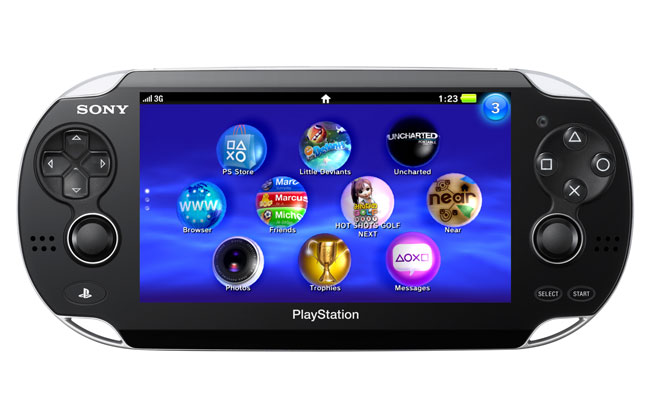
Sony unveiled its NGP (Next Generation Portable) yesterday, but left many questions unanswered. While the device appears to be a solid successor to the PSP, we don’t yet know how many original games it will have, what it will cost, how it will use 3G, or what kind of battery life the dual quad-core device will get. Historically, small questions like these have meant the difference between a successful handheld game player and a failure. Below are a few things we’ve learned.
Physical game cards
We knew the NGP had some form of flash card storage, but Sony seemed to imply that all games would be downloaded via Wi-Fi or 3G directly onto the device. Not so, clarifies Andy House, president of Sony’s European branch. In a blog post, he discusses the device and reveals that games will be sold in stores and on a PlayStation Store online. This means you can still go to GameStop to get a game, but it also means that the device might only be able to hold one game per flash card. Most games are the size of PS3 games, which range from 1-25 (or so) gigabytes in size, though most clock in under 10GB. Flash cards begin getting mighty expensive when they get up toward 32+ gigabytes. We’ll have to wait to see how Sony handles this storage issue.
3G or not to 3G
We also know that the NGP will have 3G, but Andy House told Eurogamer that there will be multiple NGP models and only one of them will have 3G. It is presumed that other models may vary in storage size and will probably be Wi-Fi-only.
“The first thing to clarify, which I’m not sure the presentation did a perfect job of doing today, is that all of the devices will have Wi-Fi capability; a separate SKU will have 3G,” said House. “So the user gets a choice. Wi-Fi is available wherever, which clearly is the most important aspect of connectivity and that connected experience; 3G will be a subset of that.”
House said that Sony is “working hard” on carrier partnerships for 3G access, but could not confirm how exactly it will work. Will the connection be free, like Amazon’s Kindle, and a portion of each game sale would go to the carrier? If that is the case, how would carriers be compensated for online multiplayer? A monthly fee seems like a must. Traditionally, Sony has had a difficult time obtaining support from wireless carriers in the United States–AT&T (GSM) is probably the closest thing it has to a friend here. Will the NGP have GSM 3G access? Will it include support for CDMA? And what about 4G? Wouldn’t a hardcore device like NGP benefit from a cutting edge 4G connection over HSPA or LTE?
Pricing, battery life
Sony hasn’t revealed any info on battery life and pricing, but Ars Technica pulled together a number of articles and quotes, pointing toward battery life that is about equal to the original PSP. Another source said it would be around 4-5 hours–fairly low for a handheld game machine. Hopefully the final unit will attain those stats.
Though the system will be released in at least one territory by the end of 2011, price is another mystery. The Nintendo 3DS is Nintendo’s most expensive gaming system to date at $250. It’s estimated that the NGP will cost at least as much, but likely much more. $250 was the original price of the PSP, but at the time it was $100 more expensive than the $150 Nintendo DS. The only thing we do know: executives have confirmed that it won’t be as expensive as the $600 PS3 was when it launched.
Gameplay video


